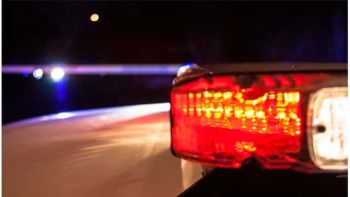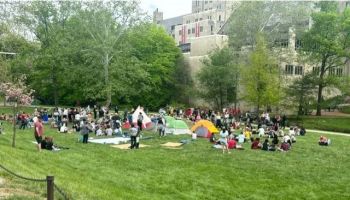by California Energy Commission
Triple-digit summertime temperatures are a fact of life in parts of California. Heat can be a killer if you’re not careful and play it cool. Here are things to remember when the temperatures start to soar.
Most healthy adults can cope with heat; their bodies are able to maintain normal temperatures…up to a point. The body maintains its temperature primarily through sweating. When body heat rises above the norm, the brain causes the blood vessels in the skin to dilate, providing increased blood flow at the surface of the body and supplying increased fluids to make sweat. As perspiration evaporates, it cools the surface of the body and lowers body temperature. If the humidity is higher, it is more difficult for the body to perspire normally.
Here are five ideas to keep your house and yourself cool:
- If your area cools off in the evening, take advantage of the cool evenings to cool off your entire house. Open windows and doors with screens to bring the inside temperature down.
- Consider using a whole-house fan. It is a “natural evening air conditioner.”
- In the morning, close up your house and draw blinds and drapes so the house stays darker and thus cooler.
- If you have venetian blinds, close them or angle them upwards. That way, light is reflected up and into the room and direct rays of the sun are not let in.
- Set your termostat to 78 degrees Fahrenheit when you are home and 85 degrees when you are away. For the infirm, elderly, and those who have trouble maintaining body temperatures (such as diabetics), set your thermostat lower (72 to 75 degrees) when you are home.
Hot weather affects the elderly and the infirm more than those who are in better health. So, keep reading…
At-Risk from High Heat
Information compiled from various medical sources and websites.
Although anyone, at any time, can suffer from heat-related illness, some people are at greater risk than others. Check regularly on:
- Infants and young children up to 4 years of age
- Persons over 65, and particularly those who have health problems involving their heart, kidneys, or lungs
- Persons who are overweight
- Persons taking diuretics, sedatives, tranquilizers, antihistamines or any other medication which interferes with their ability to perspire
- Persons who overwork or exercise excessively in the heat
- Persons who are dehydrated or have poor circulation, reducing the ability of their body to deliver blood to the skin
- Persons who have a mental illness
- Persons who are physically ill, especially with heart disease or high blood pressure
Visit older adults at risk at least twice a day and closely watch them for signs of heat exhaustion or heat stroke. Infants and young children, of course, need much more frequent watching.
Three Stages of Overheating
Prolonged exposure to excessive heat causes symptoms that become progressively worse unless you get out of the heat and do what is necessary to care for yourself.
1. Initially, exertion in heat and/or lack of water (or loss of water and salt from heavy sweating) will cause cramps; painful spasms that usually center in the legs, but can also occur in the abdomen and arms. (A note regarding “thirst”: By the time your body tells you that you are thirsty, you’re already mildly dehydrated.)
Also, persons poorly hydrated, or poorly acclimatized to heat, or standing for long periods (or who stop/stand abruptly after working/exercising) in the heat, may feel suddenly weak and dizzy, or may actually faint!
Should you get cramps, or suddenly feel weak/dizzy, stop what you are doing, rest in a cool area, and drink clear juice or a sports beverage. With shade and rest, faintess or dizziness should subside promptly. If cramps persist for more than an hour, see a doctor.
2. Heat exhaustion comes next. Your body temperature is still normal, but your skin is cold and clammy, you’re thirsty, become uncoordinated and feel dizzy. You may feel faint, and your heartbeat may be rapid. You must immediately be rehydrated with water, salt and minerals. If these symptoms persist even after you’re cooled down, see a doctor. ONLY let persons exhibiting these symptoms have water or sports drink IF THEY ARE FULLY CONSCIOUS and can protect their own airway, as nausea and vomiting are also signs of heat-related illness.
3. Finally, there is heat stroke. If you’ve let things get to this stage, you’re in serious trouble. As your condition deteriorates, your body actually stops sweating – so beware of dry, hot red skin. Your body temperature is above 103 degrees F, your skin is dry and flushed (red), your pulse is strong and rapid, your mental state is impaired, -you’re on your way to a coma. You may die unless you’re treated immediately.
If you see someone with these symptoms, call for an ambulance. While awaiting its arrival, get the victim out of the heat. Loosen or remove clothing, wrap the person in wet towels or clothing, and apply ice packs around the neck, the groin and under the arms and knees (where the blood flow is greatest and closest to the surface). Do NOT allow oral hydration if mental impairment is observed (and it is usually present in this condition).
The best defense is PREVENTION.
Here are some precautions you can take…
- Wear light weight, light-colored loose-fitting clothing.
- Apply sunscreen with a Sun Protection Factor (SPF) rating of at least “SPF 15” to exposed portions of the body
- Limit exposure during the hottest hours: 10 a.m. to 6 p.m.
- If possible, avoid strenuous work or exercise outside.
- Take advantage of shade in the environment and/or wear a wide-brimmed hat.
- Stay in air-conditioned areas or use cooling fans to speed sweat evaporation.
Other Things to Do and Not Do
Stay indoors and, if at all possible, stay in an air-conditioned place. If your home does not have air conditioning, go to the shopping mall or public library-even a few hours spent in air conditioning can help your body stay cooler when you go back into the heat. Call your local health department to see if there are any heat-relief shelters in your area.
Electric fans may provide comfort, but when the temperature is in the high 90s or above, fans will not prevent heat-related illness. Taking a cool shower or bath, or moving to an air-conditioned place is a much better way to cool off.
Drink lots of cool, non-alcoholic fluids. If you’re exercising or working, drink 2 to 4 glasses of water an hour. If you lose a lot of fluid on a hot day, sports drinks are preferred over water because they will replenish sodium.
Check with your doctor if you have health problems that require you to limit fluid intake or you’re taking diuretics – ask him/her how much you should drink while the weather is hot.
Don’t wait until you’re thirsty to drink. Drink more fluids (nonalcoholic) regardless of your activity level. Don’t rely upon thirst as an indicator of your need for water; it’s not reliable in very high heat.
Don’t drink liquids that contain caffeine, alcohol, or large amounts of sugar – these actually cause you to lose more body fluid. Also, avoid very cold drinks, because they can cause stomach cramps.
Avoid hot foods, and keep meals light. Foods (like proteins) that increase metabolic heat production also increase water loss (the body has to work harder – and use more blood – to digest heavy foods).
NEVER leave anyone in a closed, parked vehicle. Certainly don’t leave children or pets in a vehicle, even for “a few minutes.” Heat builds up rapidly to exceptionally high temperatures in a closed vehicle, and it doesn’t take much exposure to make children or pets very ill.
Pay attention to warning signs:
- Red, hot sweaty skin, cramps, lightheadedness and fatigue will occur long before heatstroke.
- Get out of the heat immediately and seek medical attention before serious harm is done.















